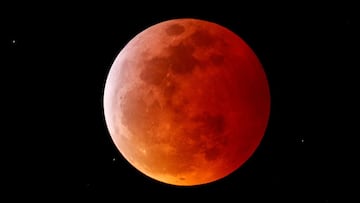Solar eclipse 2023: How and where to see the ‘ring of fire’
Millions of people will have a chance to view a spectacular astronomical phenomenon on 14 October, a ‘ring of fire’ solar eclipse.


The annular solar eclipse, also called a ‘ring of fire’ eclipse, is arriving on 14 October and will be visible in much of North and South America. The special sight will be seen by millions of people around the globe.
It is the second solar eclipse of 2023 and the name of the ‘ring of fire’ is taken from the shape of the sunlight that will surround the outside of the Moon. At least that’s what it will look like anyway.
“To actually see an event like this just gives you a different feeling about nature,” Richard Rand, the chair of the physics and astronomy department at the University of New Mexico in Albuquerque told The Guardian. “Even though I’m an astronomer, I found it quite spooky.”
How and where to see the ‘ring of fire’
The path of the annular solar eclipse will begin in Oregon and end in the state of Texas, passing through multiple states.
The states that will see the annular eclipse (in order of when it passes through)
- Oregon
- California
- Nevada
- Utah
- Arizona
- Colorado
- New Mexico
- Texas
Related stories
According to NASA data, these are the times to see it in the United States:
| Partial phase start | Start of annular phase | Eclipse maximum | End of annular phase | End of partial phase | |
|---|---|---|---|---|---|
| Eugene, Oregon | 8:06 a.m. PDT | 9:16 a.m. PDT | 9:18 a.m. PDT | 9:20 a.m. PDT | 10:39 a.m. PDT |
| Heights, California | 8:05 a.m. PDT | 9:19 a.m. PDT | 9:20 a.m. PDT | 9:21 a.m. PDT | 10:43 a.m. PDT |
| Battle Mountain, Nevada | 8:06 a.m. PDT | 9:21 a.m. PDT | 9:23 a.m. PDT | 9:25 a.m. PDT | 10:48 a.m. PDT |
| Richfield, Utah | 9:09 a.m. MDT | 10:26 a.m. MDT | 10:28 a.m. MDT | 10:31 a.m. MDT | 11:56 a.m. MDT |
| Albuquerque, New Mexico | 9:13 a.m. MDT | 10:34 a.m. MDT | 10:35 a.m. MDT | 10:39 a.m. MDT | 12:09 p.m. MDT |
| San Antonio, Texas | 10:23 a.m. CDT | 11:52 a.m. CDT | 11:54 a.m. CDT | 11:56 a.m. CDT | 1:33 p.m. CDT |
Where to stream the annular solar eclipse
If you don’t live in any of these states, the event will be broadcast by NASA through its Youtube channel.

